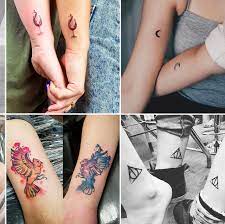
Removal of Gauze and Cleaning
Remove any gauze or medical-grade adhesive as soon as your tattoo has healed. Start cleaning it twice daily with lukewarm water and unscented body wash. You may experience light scabbing similar to what would occur from wound healing but no thicker than typical wound scabs.
Redness
Redness and itching may peak within one to two weeks of having your tattoo session. This is normal and part of the body’s natural response to trauma. Be sure to wash and moisturize twice daily with fragrance-free lotion like Lubriderm. Avoid rough washcloths or loofahs as they could delay healing, and swimming or bathing during this time may irritate the new layers of vulnerable skin. If persistent itching doesn’t subside or thick, smelly fluid appears, seek medical attention immediately.
Swelling
Swelling, bruising, and itching are normal after getting tattooed. Avoid scratching, as it can interfere with healing and distort your tattoo design. Applying ice can help reduce swelling and bring relief. Avoid hot showers as they restrict blood flow. If symptoms persist, consult a physician who can diagnose your situation and prescribe antibiotics if necessary.
Scabs
Tattoos heal like open wounds, so it’s common for scabs to form over time. Avoid picking or scratching these scabs to prevent exposing more ink and potentially causing lighter ink coverage or faded tattoos. Wash twice daily to eliminate bacteria, and regularly apply fragrance-free lotion. Be cautious not to use too much cream to avoid seepage under the scabs, which may cause bleeding.
Peeling
After several days, redness should subside, and your tattoo may appear scaly or dull. Scabs will naturally come off during this stage. Moisturize twice daily with moisturizing cream to keep the skin hydrated and reduce flaking or early peeling. Avoid picking or pulling at scabs before they heal correctly to prevent bleeding, ink removal, scarring, patchiness, and distortion of the tattoo design. Resisting the urge to scratch is crucial to avoid introducing bacteria and potential infection.

